Brought to my attention by my son, Chris, this is an important discussion and such technology should be banned in my opinion. It is becoming very tough for the average bracket racer to compete against such technology as mentioned in this article – Roger:
Why is bracket racing the only form of racing without rules? by Jok Nicholas – December 2014
Related:
BOBBY BENNETT: THE TITANIC DIDN’T ADJUST AND SEE WHAT HAPPENED – CompetitionPlus – January 12, 2014
About Roger
Driver of our '57 Chev from 1972-2019, Vietnam veteran (A Troop, 3/17th Air Cavalry Scout helicopter Line Chief and later Cobra Periodic Inspection team leader), retired ASE rated automotive mechanic. Roger became involved in drag racing during his high school days and after his stint in the Army ran E & F/MP [Modified Production] here in Division 6 before switching to bracket racing when the '57 became obsolete for class racing. He often raced at Puyallup, Kent-Pacific Raceways, Bremerton, Portland & the original Mission, B.C. track.


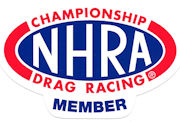
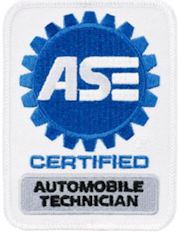
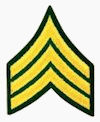
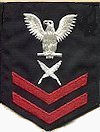












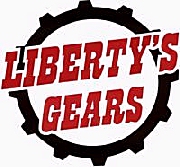
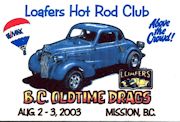









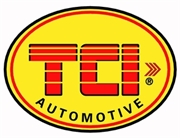





Frankly, I didn’t like it when they allowed trans brakes in Pro bracket. It opened the door to a few that would take advantage of that to install hidden delay boxes, adjustable transbrake switches, etc. Somewhere we have to get control of the electronic craze or the sport will be lost for the average weekend racer that has a limited budget!
First, I am no expert on drag racing but will add some comments based on what I have see with my son doing some TS racing and Quick 8 racing the past couple years. I think for better or worse electronics are probably here to stay, especially for the younger tech crazy generation and for the higher end bigger racers who have large investments in cars and to get the best performance they need two things. They need to collect massive amounts of data and more importantly they need to understand the data and what on the car the data is telling them needs attention. This is happinging in many business sectors of our economy as collecting data and using it better than the other guys gives a better chance for success. That has been evolving rapidly over the past 25 years.
The economics are interesting to me too. There are people out there racing $300-$350K cars for a $10K winner prize. That’s compared to people racing $15-$20K cars for maybe $1000 winner prize. Which makes more economic sense? Well, that depends on your financial situation foe sure.
My son raced the PDRA TS Series this season and I am not sure if there really is bracket racing at 175 miles an hour. If the dials are within a few hundreds of each other they are essentially heads up races. Then the frustration becomes breaking out by a few thousands and losing. Certainly at 175mph a driver has a hard time slowing a car that is doing 250-260 feet per second at the finish line. So, it creates some interesting challenges for the cars, teams and drivers.
The Southeast Gassers started by Quain Stott is an interesting concept that seems very popular with both the fans and the drivers. They are going back in time building cars in the manner of the 1950s and early 1960s. Old school and no new technology. Maybe this gets more people to the races. Both fans in the seats and racers in the lanes. Otherwise I think the desire to go faster and technology combined with money will keep driving speeds faster and ETs lower. In PDRA TS next year you will have Lizzy Musi’s Pro Nitrous car being driven by her little sister in TS. This is a car that has run around 3.75 at 200mph. I’m sure they will detune it some to run in the 4.0x or low 4.1x but it still has the effect of saying to everyone the record bumps of this year will likely be going down. Personally, I feel the cars that ran in the 4.1x or 4.2x times need to find a way to pick up a tenth or a tenth and a half to be able to make the field. What does this take…money, technology and expertise. Is it really a sportsman class too if the car is not owned by the driver, but by a car owner? I am not sure but it is a reality we have to deal with too. When one looks at a Series such as PDRA TS or TD where maybe 6-10 racers are able and willing to follow around the country to race the rest of the field has to be able to attract local racers within a couple hours of the race to come out and pay to play in these very fast fields. How do you do that…get people to come out, paying fuel to travel and entry fees for a race they may not feel they have a chance to qualify for at all.
One idea I have thought about is to give the TS and TD racers an option to race for either double points if they are chasing the points series or double prize money if they are not chasing points at one or two races of the racers choice. A racer could then choose to race for double points earned during eliminations or double cash prizes earned during eliminations. To me if a car can make the field it is almost a coin flip going round by round. This might give an additional incentive for more local cars to try to make the field. They would have to declare what they are racing for when they sign up and pay their entry fees…before qualifiers but perhaps after testing.
Finally, I don’t think the sanctioning bodies want to go around at each race playing policeman and enforcer. The race days are long enough already often going from early morning to late at night. And wrecks, oil downs and weather delays only add to the time need to get the race done.
Sorry if I rambled on.
Todd Ferguson
Harrisburg, NC
Todd, thanks for the reply, but there is a BIG difference between Top Sportsman racing and bracket racing in the Pro or Sportsman brackets. Those are the two brackets where such electronics should be banned, or there will be no “entry level” place for the AVERAGE weekend racer.
Comparing Top Sportsman, Pro Mod to entry level bracket racing is like comparing Top Fuel to Junior Dragsters in my opinion.
I only know what I have seen and of course not too sure about all of that either. Certainly lower cost levels of racing is a good thing and needed to get more people involved. What kind of money are we taking for the electronics that these guys are using? I know some of the Race Pak stuff can get pretty expensive. But it becomes sort of relative to what people are willing to spend in total too. If the electronics are only a couple hundred dollars then it would seem access able to most all racers. Can it really be kept out without extensive and time consuming inspections and searches? Are these level of racers racing for money or trophies mostly? In motocross Dan raced for trophies. But in the money classes there were guys who would put you over a berm if they could win $5 more by doing it. Human nature when money is involved perhaps, but there were also people pushing the limits of the rules for trophy wins too. Some people just want to win really badly I guess and will do what they can to win. I see in some cases where people maybe can’t compete in Pro Nitrous but want to make costly changes to Top Sportsman and race down a level where they might have a better chance to be the top dog. Weight limits and minimum weights always seem to come up in TS forums.
Best,
Todd Ferguson
Harrisburg, NC
It can be kept out by banning digital ignition boxes in Sportsman and Pro bracket. That’s not difficult for a tech to check.
I think a major point the author missed has nothing to do with technology. Decreasing car counts are simply a fact of life as the average age of drivers increases. Frankly, the young generation has very little interest in cars or motorsports. The days of high school buddies changing a cam in their hot rod after school is ancient history. Those days are gone forever.
My fear is if we don’t get a handle on Pro and Sportsman bracket, the decline of young drivers getting into the sport will only accelerate if they learn they simply can’t compete with the heavy hitters.